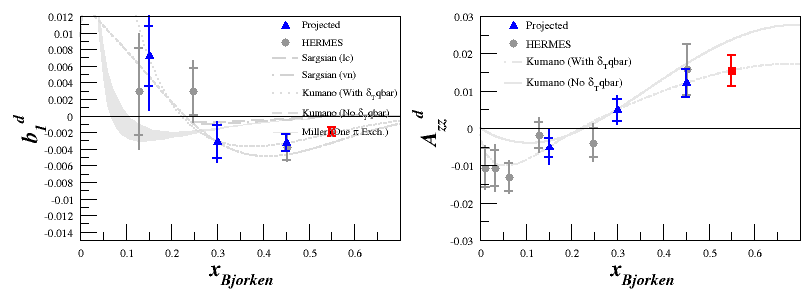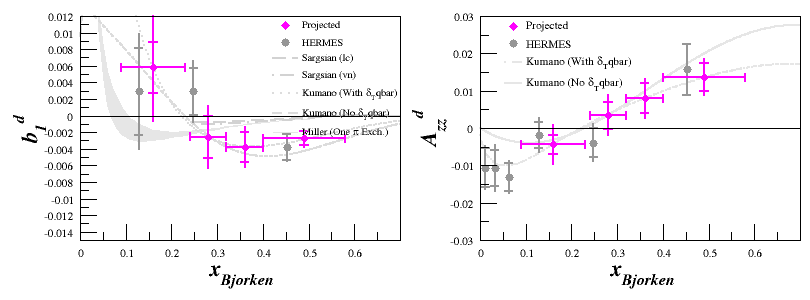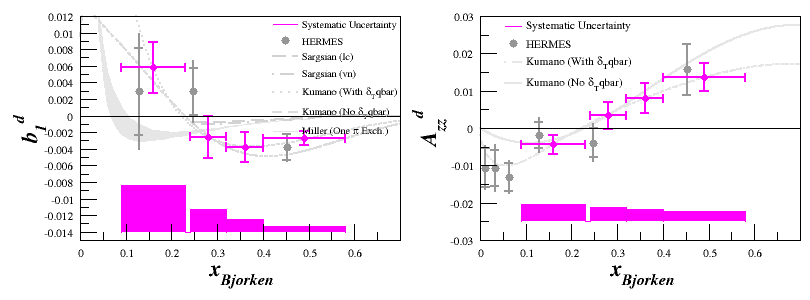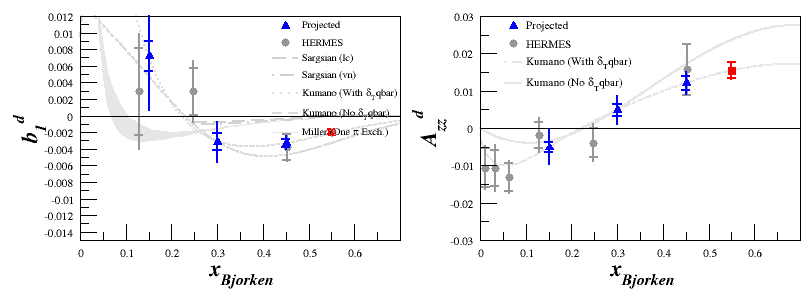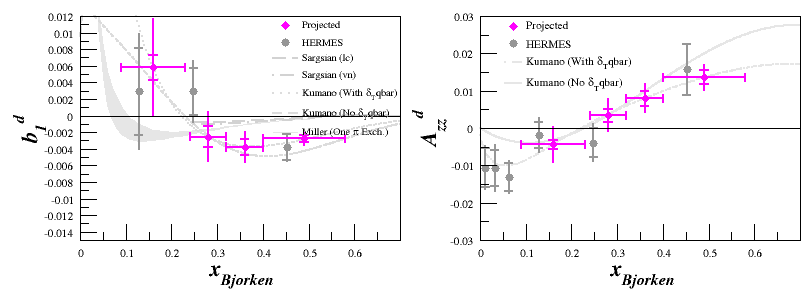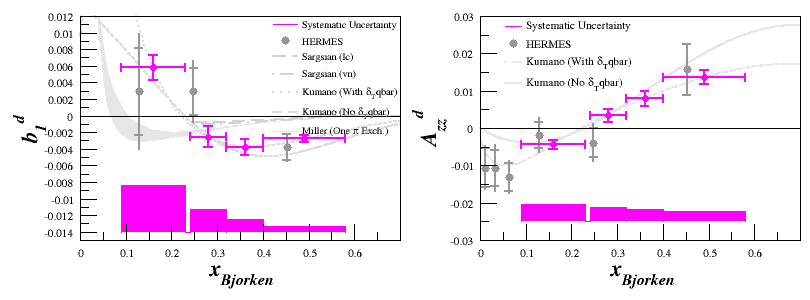Elong-13-06-03
Including Drift by Bin
Dustin's work on the drift has given a different value depending on the spectrometer setting, which are shown in the table below.
$x_{\mathrm{Spectrometer}}$ $dA_{zz}^{drift}$ 0.15 0.0046 0.30 0.0037 0.45 0.0028 0.55 0.0021
For the plots using the spectrometer settings as bins, where $A_{zz}$ and $b_1$ are in blue and red, these are included as an additional systematic uncertainty.
For the rebinned plots, where $A_{zz}$ and $b_1$ are in pink, each of the drift uncertainties are added as a weighted average. The weights are the number of events that each spectrometer contributes to the rebinned statistics.
That's to say,
$dA_{zz}^{Ave. Drift} = \frac{\sum \left( dA_{zz}^{drift}N_{Spec} \right)}{N_{Total}}$
where $dA_{zz}^{drift}$ is shown in the table above for each spectrometer setting, $N_{Spec}$ is the number of events from a particular spectrometer setting that go into this x bin, and $N_{Total}$ is the total number of events, from all spectrometer settings, that go into this x bin.
Conservative Estimates
If we apply these with a conservative estimate, with $P_{zz}=20\%$ and $dA_{zz}^{(Rel. Sys)} = 12\%$, we can estimate both the full spectrometer bins:
We can then use a weighted average for $dA_{zz}^{drift}$, where the weights are number of events that each spectrometer setting contributes to a particular $x$ bin. The rebinned estimate is then:
Same as above, but if we split the systematic uncertainty into bars, we get:
Optimistic Estimates
If we apply these with an optimistic estimate, with $P_{zz}=40\%$ and $dA_{zz}^{(Rel. Sys)} = 6\%$, we can estimate both the full spectrometer bins:
We can then use a weighted average for $dA_{zz}^{drift}$, where the weights are number of events that each spectrometer setting contributes to a particular $x$ bin. The rebinned estimate is then:
Same as above, but if we split the systematic uncertainty into bars, we get:
--E. Long 20:58, 3 June 2013 (UTC)
